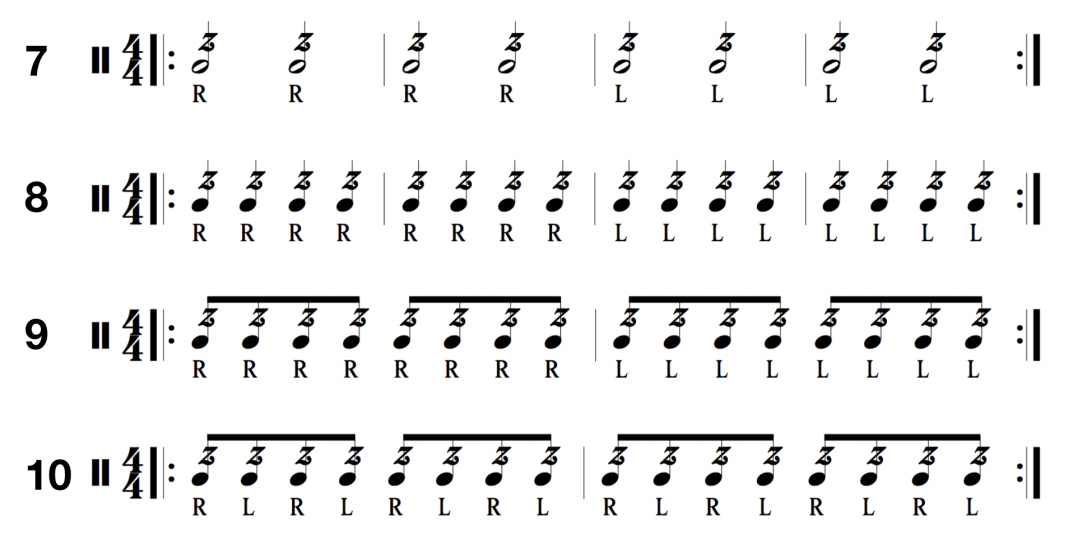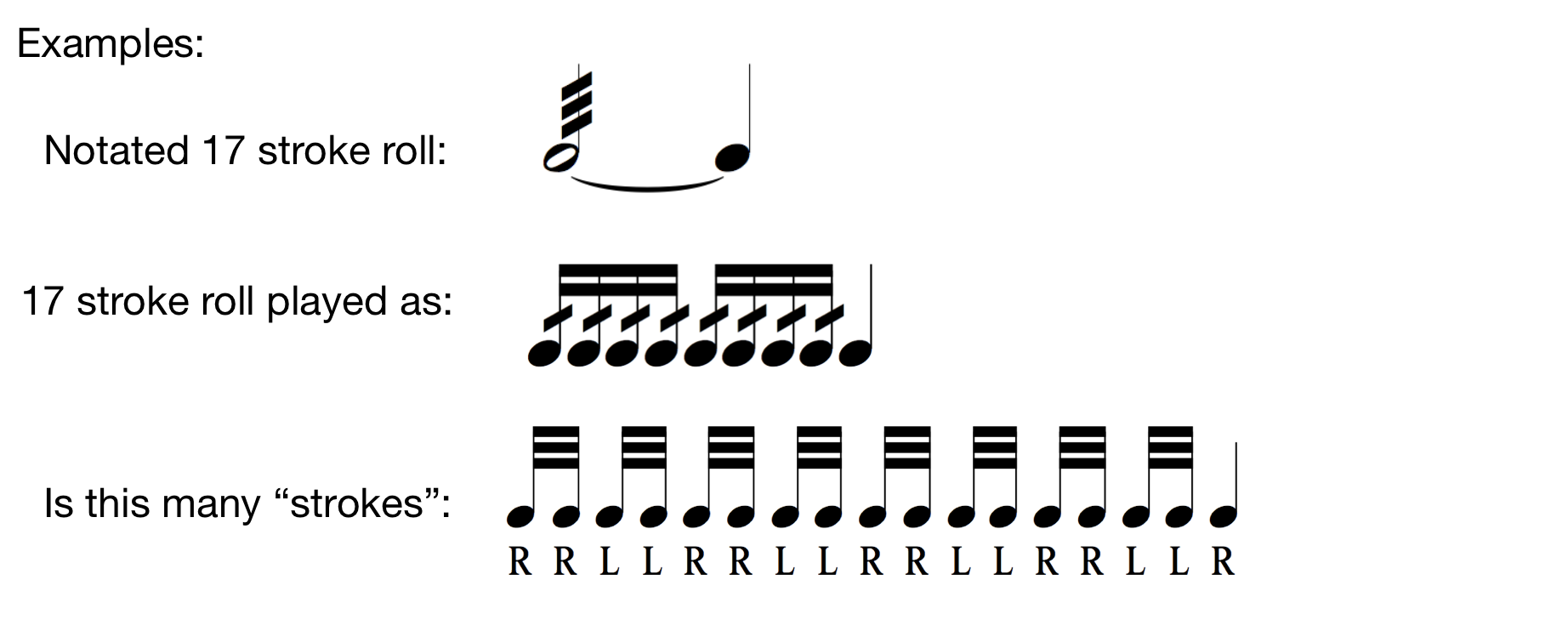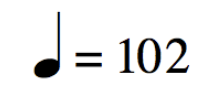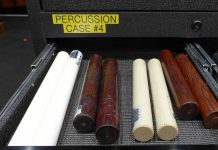For non-percussionist band directors
Developing rolls is an important element in young percussionists. There are several approaches to developing rolls in beginning method books, but I have found this approach to work best with my students. The keys to this method are starting with a good fundamental rebound stroke, developing a consistent multiple bounce on each hand through the use of fulcrum and finger grip, and understanding the “skeletal” pattern behind the three most used metered rolls (5 stroke, 9 stroke, and 17 stroke). These rolls are introduced as “closed” rolls (using multiple bounces), from which the student can transition to a double bounce “open” roll.
The Rebound Stroke
The rebound stroke is the main stroke used for all single strokes. The stick should move smoothly down and up, and all fingers should remain loosely on the stick. There should be enough weight applied on the downstroke so that the head helps the momentum of the upstroke. It is a wrist motion – do not let students play this stroke using only finger control (you can tell if the top of the hand is not moving) – but students should not grip the stick so tightly as to restrict the natural rebound of the head.

These simple exercises can be used to develop the rebound stroke:

The Multiple Bounce Stroke
Only after students are very comfortable with the rebound stroke should they be introduced to multiple bounce. The concept of the multiple bounce stroke is that in one stroke, many bounces are produced (anywhere from 2 to 5 or more). The multiple bounce stroke is controlled by the amount of downward pressure applied, the amount of grip, and the upstroke required to set up for the next stroke. Downward pressure is maintained by the weight of the hands, and controlled by wrist motion. The grip is controlled in two places: mostly at the fulcrum (between the thumb and the first and second fingers) and with the back two fingers (mostly on the upstroke).
The upstroke is controlled by a combination of wrist motion and gripping with the back two fingers.
Fulcrum exercise
A good way for students to experience the fulcrum is to have them hold the stick with only the thumb and first finger and play a downstroke, holding the stick down with the weight of the wrist. The amount of bounce can easily be varied by squeezing less at the fulcrum. Repeat the exercise using both the first and second fingers along with the thumb. The students should try to get as many bounces as possible before lifting the stick.

Developing the multiple bounce stroke
Once the student can effectively produce a multiple bounce on each hand using fulcrum only, add the back two fingers, keeping them loosely on the stick during the downstroke and bounces, then gripping slightly on the upstroke wrist motion. Here, the multiple bounce, or “buzz” is indicated by a “z” on the stem. Use this technique on the following exercises:

Skeletal patterns
The key to playing metered rolls is understanding the skeletal pattern associated with each one. Practicing the three patterns below will help with the three most utilized rolls. Play each pattern with alternating sticking, but start each pattern on the right hand (or stronger hand). It is important that all strokes in each pattern are at the same height/volume. Focus on producing a smooth and steady sound from hand to hand.

Now add multiple bounce strokes to each of these patterns. A slash through the stem indicates a multiple bounce stroke. Make sure that multiple bounce strokes are at the same height/volume as the skeletal pattern.

Why are these rolls named the way they are?
Rolls are named for their open stroked, rudimental interpretations, in which each double bounce represents two 32nd notes. Each separate bounce or tap is counted as a “stroke”.

Developing double bounce “open” rolls
From this point, students can start developing both smooth closed rolls, and double bounced open rolls. Starting with the fulcrum and multiple bounce exercises above, increase the amount of squeeze at the fulcrum and lift with the wrist/back fingers sooner to produce double bounces. Once a consistent double bounce is produced, apply that technique to the skeletal pattern exercises.
Below are a few exercises to help familiarize students with these three roll types. Rolls can be played as either closed or open.


When to used “closed” or “open” rolls?
In a concert band or orchestra environment, generally speaking, closed rolls are preferred. An
exception would be marches, where open rolls are the usual choice.
In marching band, rolls are usually open, with closed, or buzzed rolls usually indicated with “Z”
instead of the typical slashes on the stem.






